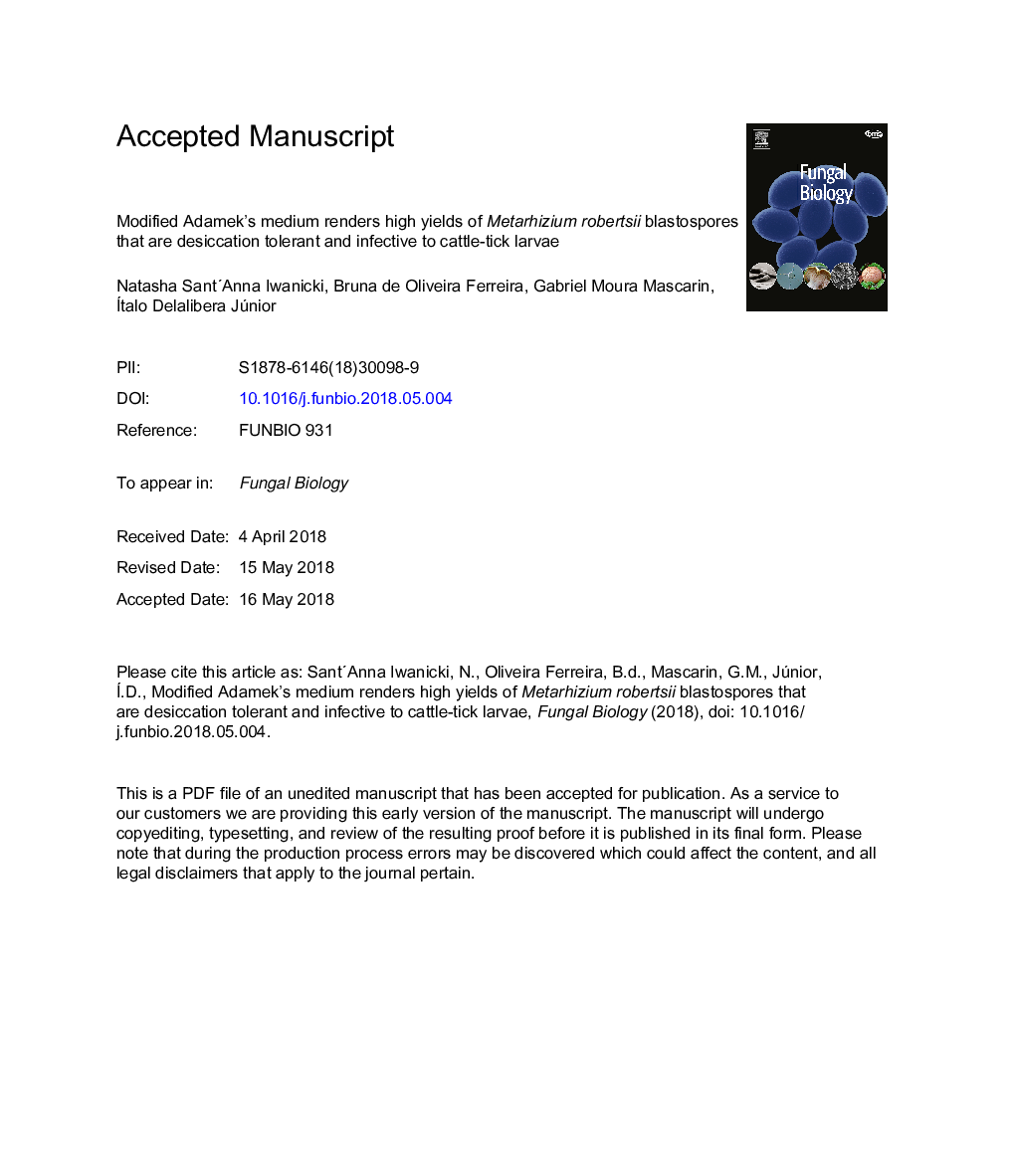| Article ID | Journal | Published Year | Pages | File Type |
|---|---|---|---|---|
| 8842704 | Fungal Biology | 2018 | 27 Pages |
Abstract
Blastospores are yeast-like cells produced by entomopathogenic fungi that are infective to arthropods. The economical feasible production of blastospores of the insect killing fungus Metarhizium spp. must be optimized to increase yields. Moreover, stabilization process is imperative for blastospore formulation as a final product. In this sense, our goal was to increase blastospore production of two Metarhizium isolates (ESALQ1426 and ESALQ4676) in submerged liquid cultures. A modified Adamek's medium was supplemented with increased glucose concentrations and the fermentation time was accelerated by using a blastospore pre-culture as inoculum. Virulence of air-dried stable blastospores was compared with conidia toward larvae of the cattle tick, Rhipicephalus microplus. Our results revealed that blastospore production of Metarhizium is isolate- and species-dependent. Glucose-enriched cultures (140Â g glucose/L) inoculated with pre-cultures improved yields with optimal growth conditions attained for Metarhizium robertsii ESALQ1426 that rendered as high as 5.9Â ÃÂ 108 blastospores/mL within 2Â d. Resultant air-dried blastospores of ESALQ1426 were firstly proved to infect and quickly kill cattle tick larvae with comparable efficiency to conidia. Altogether, we argue that both osmotic pressure, induced by high glucose titers, and isolate selection are critical to produce high yields of blastospores that hold promise to control cattle-tick larvae.
Related Topics
Life Sciences
Agricultural and Biological Sciences
Agricultural and Biological Sciences (General)
Authors
Natasha Sant'Anna Iwanicki, Bruna de Oliveira Ferreira, Gabriel Moura Mascarin, Ítalo Delalibera Júnior,
